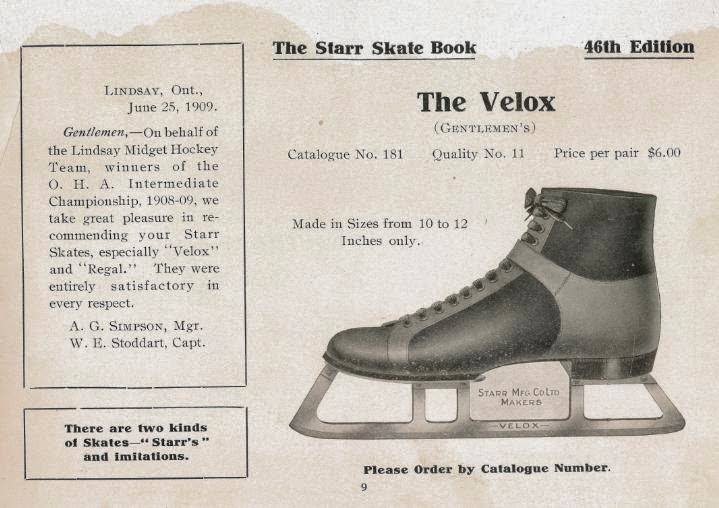BY: KATHERINE HANNEMANN
Is it cold enough for you yet? This week of sub-zero temperatures was the first true test of my resolution to get out and embrace winter this year, instead of avoiding the outdoors and complaining bitterly about the cold until spring -- which is what I usually do.
One strategy that is helping me hold fast to my resolution: go ice skating as often as possible. With several free and well-maintained municipal ice rinks within a short walking distance of my apartment, it’s an easy strategy to adopt. To me, this abundance of accessible ice rinks is one of the great things about living in Toronto -- as well as a signifier of something quintessentially Canadian (although this is somewhat stereotypical, it’s also grounded in 19th- and 20th-century Canadian history, as we’ll explore in this post.)
 |
| Girls ice skating in Toronto, ca. 1910-1912. Source: City of Toronto Archives, via BlogTO |
During my time at the iSchool, I have been examining connections between sport and identity, on both individual and national levels. In part, this has led me to consider the clear yet complex connection between skating (and its attendant activities: hockey, ice dancing, figure skating, recreation, etc.) and Canadian identity. In addition to my very important “research trips” (*ahem*) to my local ice rink, I have also been looking at historical objects and images and how they are represented in museums and halls of fame, in order to understand some of the connections between sport and identity.
 |
| Ice skates (ca. 1900-1910) manufactured by a blacksmith in the Montreal region. Source: McCord Museum |
As my own athletic experience in ice skating remains recreational, for the purpose of this blog I will focus on recreational ice skating and skates in Canada. According to the McCord Museum in Montreal, ice skating was introduced in Canada around 1840 by British army officers. Over the next several decades, the trend took hold in Montreal and in other Canadian cities. As discussed in the Canadian Museum of History’s exhibition Lace Up: Canada’s Passion for Skating, Canada led the construction of indoor public rinks between 1860 and 1890, most notably with architecturally stunning buildings such as the Victoria Skating Rink in Montreal (pictured below).
 |
| A skating carnival at the Victoria Rink in Montreal, ca. 1870. Source: Canadian Museum of History |
In the nineteenth century, recreational skating seemed to be an activity dominated by an elite subculture. However, the expansion of public skating rinks in the early twentieth century began to make skating more widely accessible. Another factor in the popularization of recreational ice skating was the increasing availability of skates themselves. For example, the Starr Manufacturing Company, a skate company founded in the 1860s in Dartmouth, Nova Scotia, was credited by the federal government for having “helped to establish ice skating and hockey as two of Canada’s favourite winter recreations.” The Starr skate and advertisement below come from the Nova Scotia Sport Hall of Fame.
 |
| Skate produced by the Starr Manufacturing Company in Dartmouth, NS. Source: Nova Scotia Sport Hall of Fame |
 |
| An advertisement for the Starr ice skate pictured above, ca. 1910. Source: Nova Scotia Sport Hall of Fame |
Although the diversity of Canada’s population makes it difficult to describe certain activities and symbols as “universally Canadian,” ice skating unquestionably has become associated with Canadian identity roughly since Confederation. Do you cope with winter by participating in this tradition? If skating isn’t your thing, try another cold-busting strategy -- hot chocolate!


What a lovely example of how to access Canadian identity! While our country is stereotypically associated with ice skating, hockey, and pretty much every other winter sport, I think people forget that ice skating is also a recreational activity for many Canadians. Thanks for shedding light on this and for sharing your winter experience. :)
ReplyDeleteKatherine, your archival images are fantastic! Thank you for sharing and also for placing them together into a very interesting story about Canadian identity. with a global twist I would argue.
ReplyDelete